Over the last five years I’ve spent an inordinate amount of time photographing, watching and studying hunting Northern Harriers. When they pounce on their prey the action is usually so far away (or buried in the vegetation) that I don’t get a good look at what’s actually happening. But all that changed with this adult female who was so intent on capturing a vole buried deep in the matted, dried vegetation that she virtually ignored me. What fun to watch!
Unlike most other hawks, harriers very often use auditory cues (sound) to locate prey. In fact they have a facial “ruff” or disc much like owls do and its purpose is the same – to funnel sounds to the ears. The feathers that form the disc can be raised in response to noise, essentially enlarging the disc and improving hearing.
1/1000, f/8, ISO 500, 500 f/4, 1.4 tc
Harriers often hunt along predictable “pathways” and this one had made several passes by me earlier. However this time she attempted to pounced on something right in front of me – almost certainly it was a vole since they are very nearly the exclusive diet of wintering harriers.
1/1000, f/8, ISO 500, 500 f/4, 1.4 tc
She missed the vole but from her demeanor she could obviously hear it under the mat of vegetation and she became quite agitated in her attempts to get at it.
1/1600, f/8, ISO 500, 500 f/4, 1.4 tc
She repeatedly rose into the air a couple of feet and pounced back down on the same spot with her talons.
1/1600, f/8, ISO 500, 500 f/4, 1.4 tc
Here she does it again.
1/1600, f/8, ISO 500, 500 f/4, 1.4 tc
At one point she fished out what looks like an old, rotted piece of wood that had been buried under the vegetation, lifted it a few inches above the surface and then dropped it again in a different place. She was going to a lot of trouble to root out this vole and in reality it may have been a whole nest of voles as bird behaviorists often mention harriers making repeated strikes at vole nests.
1/1600, f/8, ISO 500, 500 f/4, 1.4 tc
And “repeated strikes” she certainly made, again…
1/1600, f/8, ISO 500, 500 f/4, 1.4 tc
and again.
1/2000, f/8, ISO 500, 500 f/4, 1.4 tc
At this point she seemed to have become quite frustrated as her attacks on the apparent nest of voles became even more intense.
1/2000, f/8, ISO 500, 500 f/4, 1.4 tc
A few seconds later she seemed to be hearing one of the voles moving under the vegetation to my left so she followed it (as she’s doing here) and made a few more attempts at it but was never successful so she soon flew off to hunt elsewhere.
1/1000, f/8, ISO 500, 500 f/4, 1.4 tc
This last photo is out-of-order and I lost sharp focus on the bird but I’m including it here to demonstrate some of her other attempts at removing vegetation to get at the vole(s).
This was a fascinating scene to watch and photograph. Her frustration (forgive my anthropomorphism) at not being able to get at the vole was palpable, to the point that I almost wanted to rush over and help her dig it out. I’m kidding of course. But just barely…
Ron


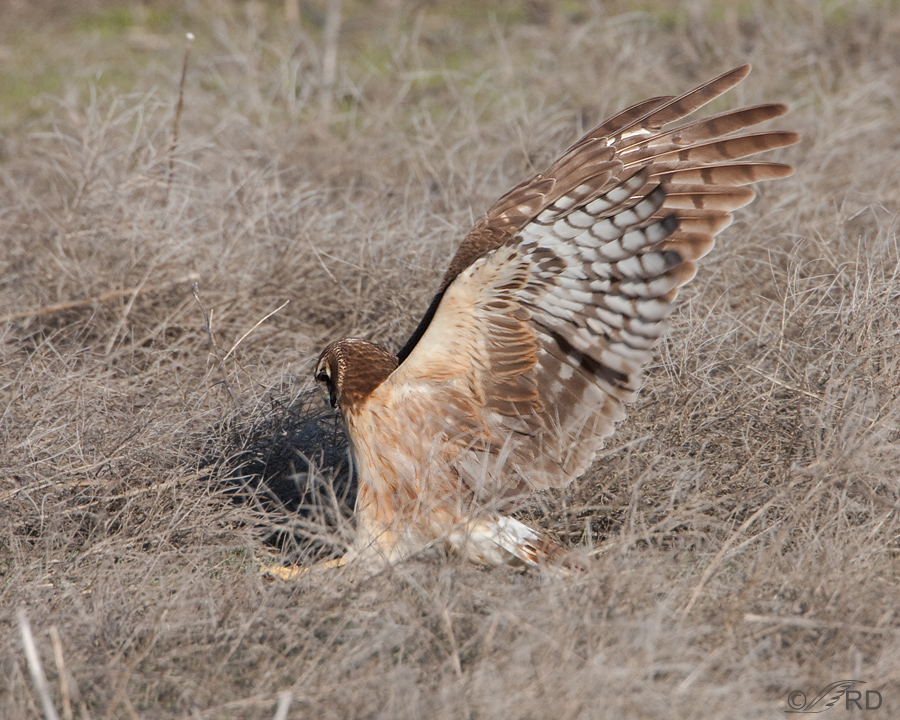
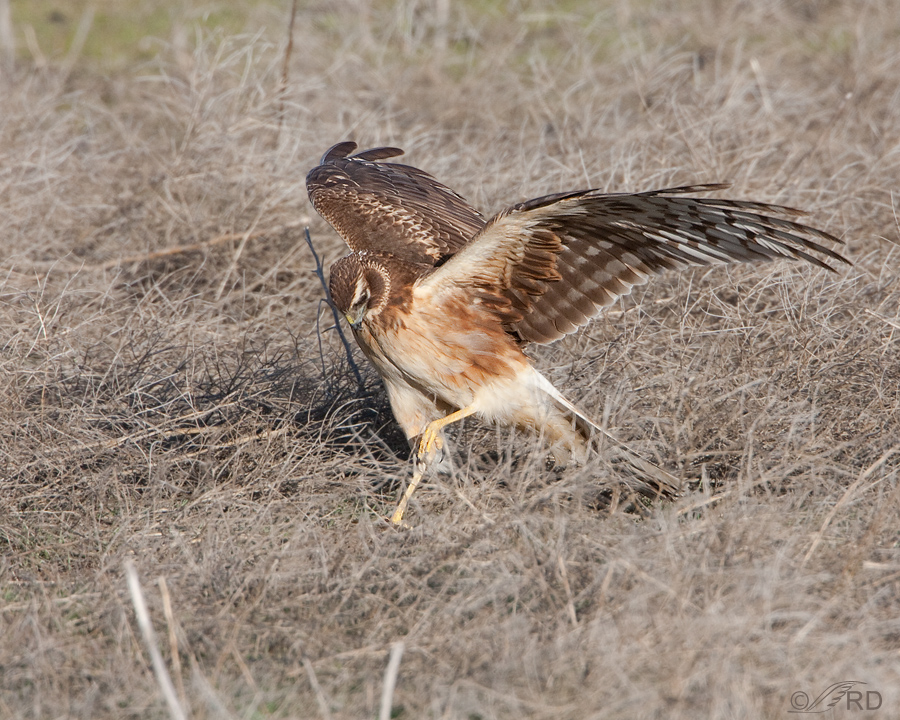
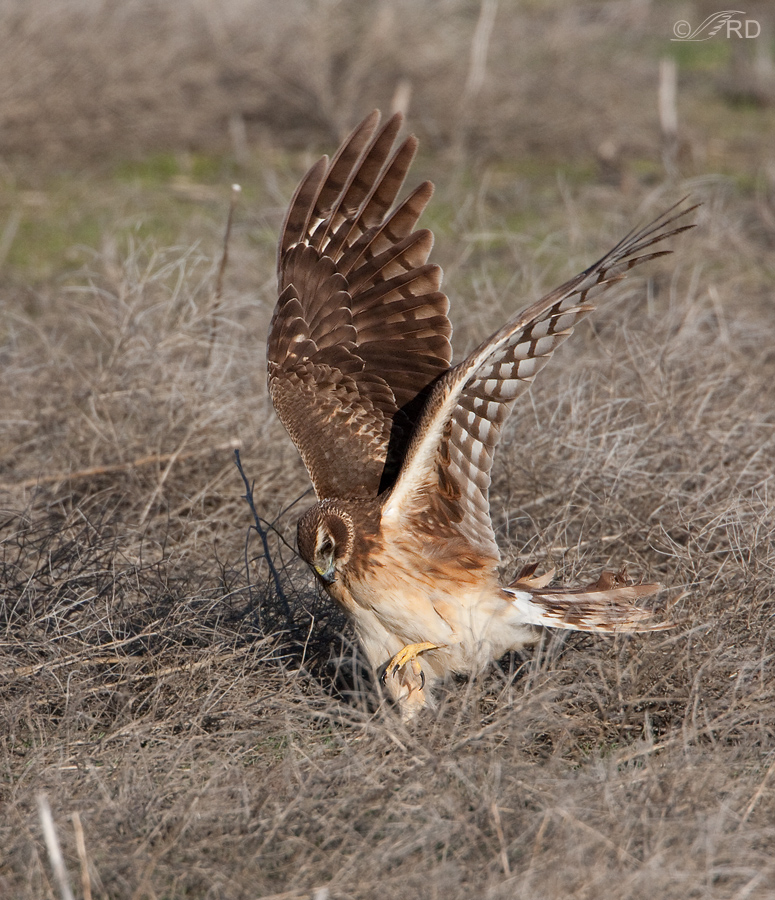
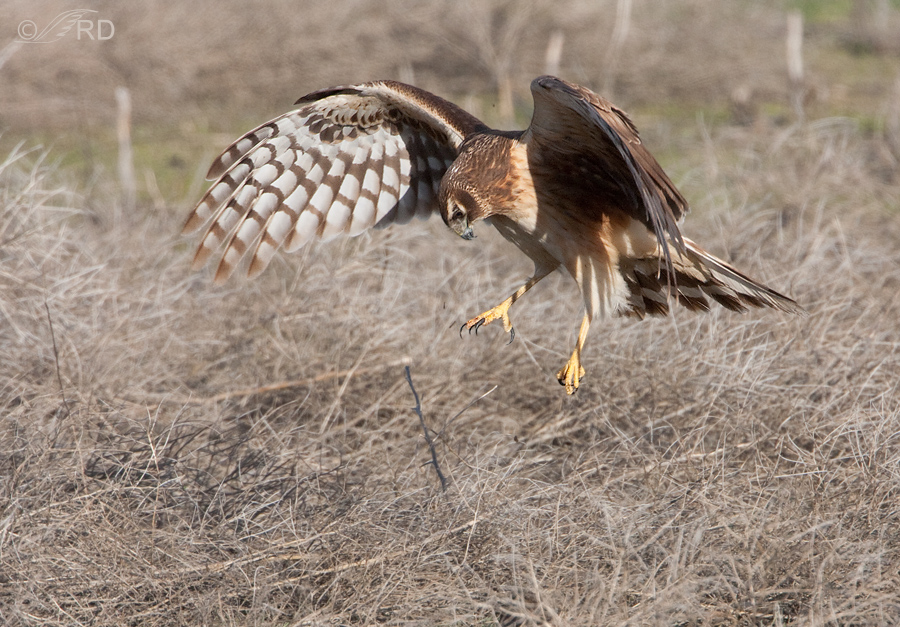
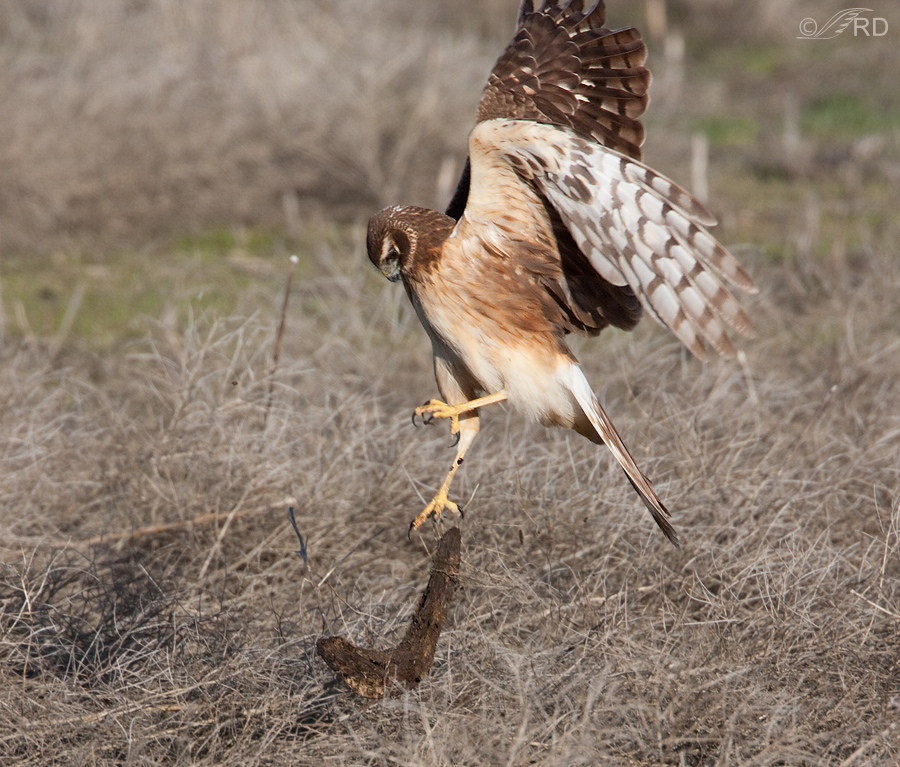
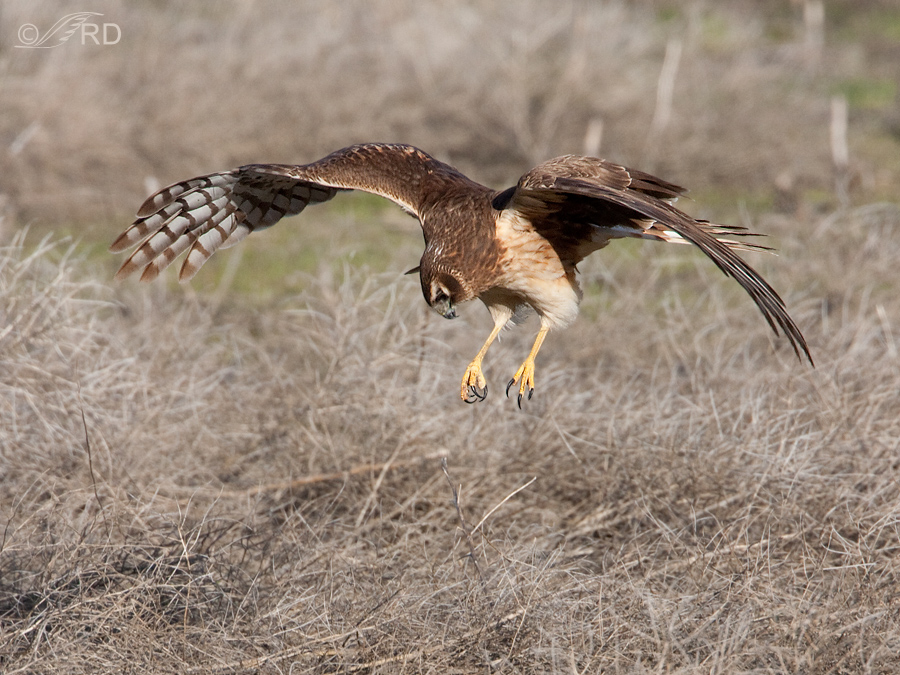
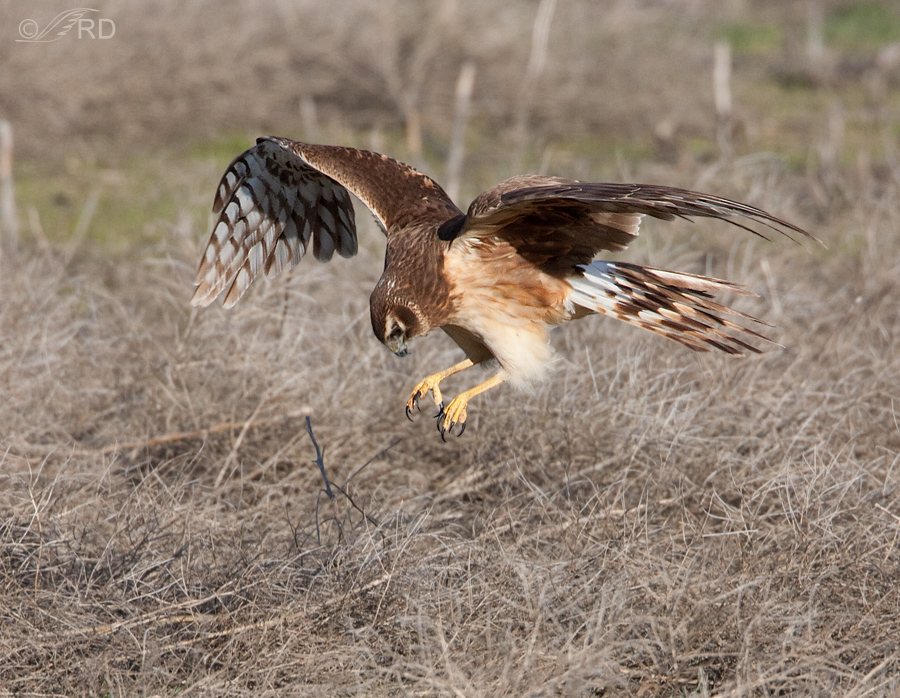
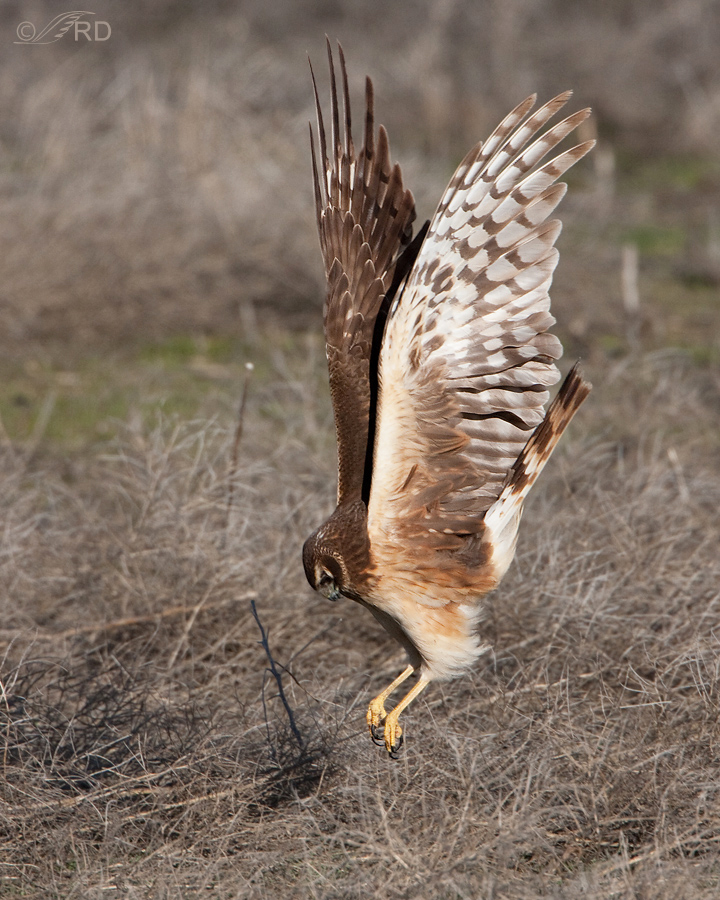
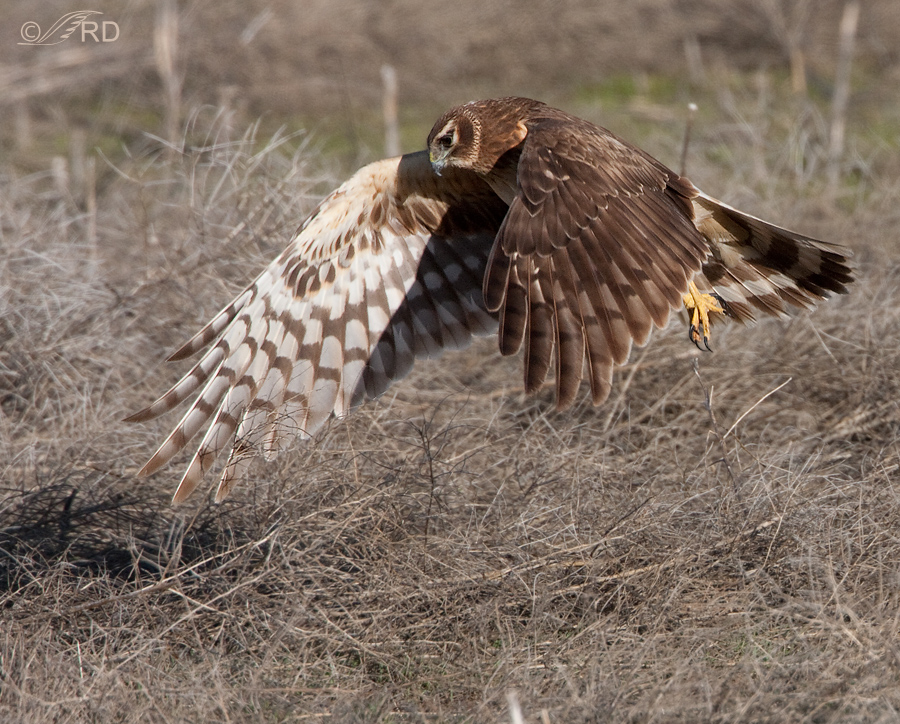
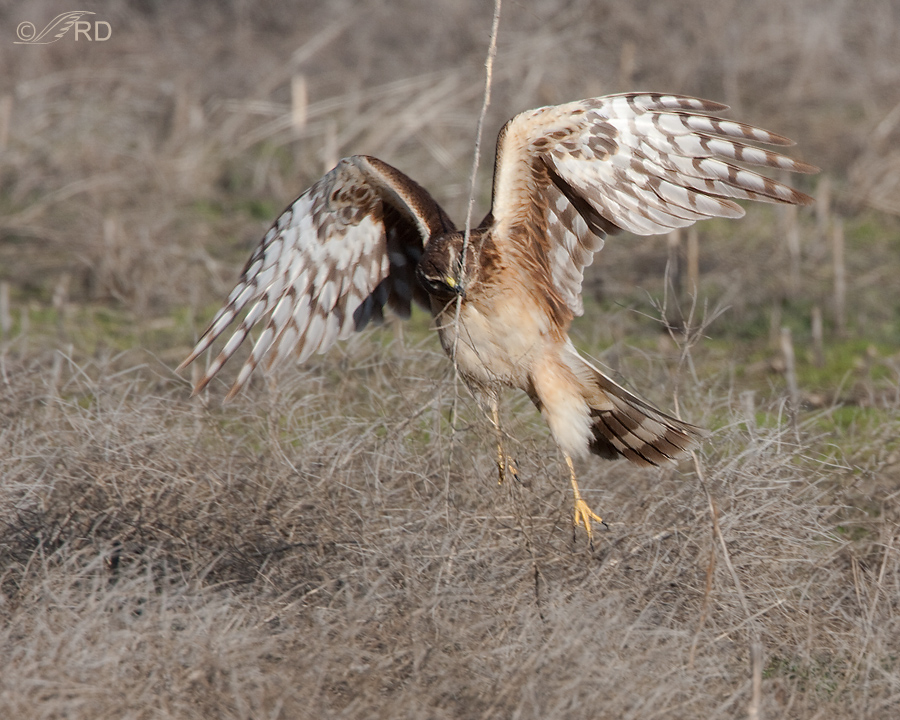
Very interesting behavior…never knew they would move obstacles to get at prey…score one for the voles.
I have the 100 – 400 also but it’s always attached to my 40D. I’d love to have both lenses mounted to the same camera model because the controls are different with my two cameras and I always fumble around too much when I grab the 40D. Used to know it inside and out…
Thank you Bob and welcome to my blog. I hope you like your gear as well as I like mine.
I do love my 7Ds. I actually have two of them. I keep the Canon 500mm on one and the 100-400 on the other. A large percentage of the time I am photographing from the car and by using a Puffin Pad window cushion it is very easy. Otherwise, I have a Manfrotto tripod with my Wimberley head.
Ron, I found your blog on Mia McPherson’s blogroll, and had to have a look. These are amazing photos of my nemesis the Northern Harrier. I, too, am a passionate bird photographer. Because of my wife, I am also into birding. I am willing to look for birds, but my main goal is to photograph them. I notice that your equipment is exactly like mine. I have subscribed to your blog so I can follow your work.
Amazing photos of a hard bird to photograph!
Wonderful sequence.
Elephant’s Child, as a biology teacher I always tried to avoid making anthropomorphic references but now that I’m retired I just can’t help myself sometimes (though I usually feel just a wee bit guilty about it…)
Another oh Wow series. Thank you. She is a truly beautiful bird – and here in Oz we certainly anthromorphise our birds behaviour as well.
Fantastic series!